How to See the Liberty Bell...in Queens
A copy of the famous American bell can be found inside a bank, which itself is modeled after Independence Hall!


It is believed that Dà a de Los Muertos (Day of the Dead) dates back to the Olmec civilization, possibly as long as 3000 years ago. The concept was passed to other cultures such as the Toltecs, Mayas, and Aztecs. Following the conquering of Mexico by Spain and the attempt to convert the native population to Catholicism, old and new blended. Since All Saints’ Day and All Hallows Eve roughly coincided with Dà a de Los Muertos, the resulting observations drew from both.
Celebrated on November 2nd, Dà a De Los Muertos is “the path back to the living world. It must not be made slippery with tears.” It is believed that this is the time when departed souls return to visit the living. It is a joyous celebration with gatherings at cemeteries for cleaning of graves, socializing and decorations.
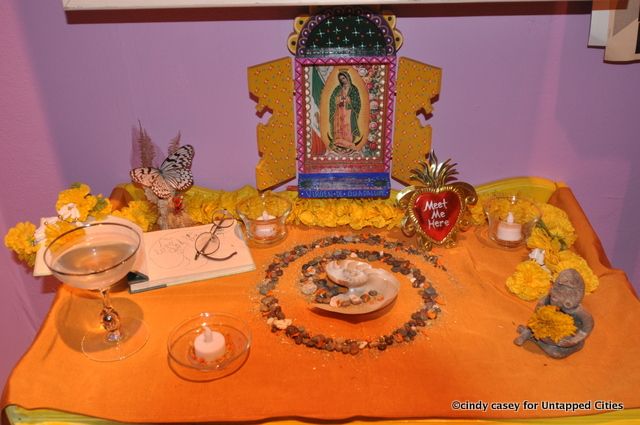
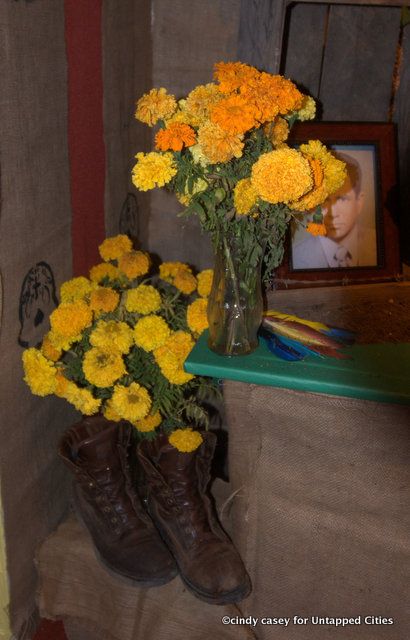
Traditionally, altars are set up in the home with favorite foods and beverages of the deceased. Marigolds are the traditional decorative flower that graces most every altar.
SOMArts celebrates Day of the Dead with an exhibition curated by René Yaà±ez and his son Rio. Rene was the founder and former artistic director of Galeria de la Raza and one of the first curators to introduce the contemporary concept of Mexico’s Day of the Dead to the United States in the 1970s.
This year’s exhibition took on a new twist with the theme “Calling On The Spirits To Face the Future,” challenging the artists to bring the centuries-old tradition of building altars fused with the artists’ sentiments on the present state of life and politics.
“I call upon the spirits to help the artists portray hopeful images as we face global economic and social challenges,” says René Yaà±ez, co-curator. “The Mayans believed that the solar system’s cycles coincided with our own spiritual and collective consciousness and imagined the close of 2012 as a period of rebirth and transition. I have asked the participating artists to interpret the profound and often enigmatic events of the present, while honoring the past and affirming the possibilities of the future.”
With over 90 participating artists and 40 exhibits the range of interpretation on the theme was staggering.
The traditional altar is prevalent from the moment you walk through the door, and yet the twists placed on the theme are fascinating.
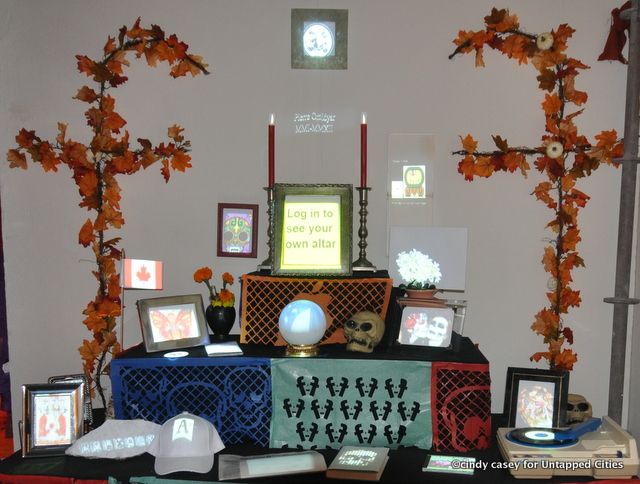
The one entry that struck me as most embracing the concept of the future was by Howard Katz. The explanation read: This exhibition is filled with altars to the dead, and someday, you too may be memorialized here. But thanks to the magic of the Mayans (and Facebook) you get to see a preview of your altar here and now.
Through Facebook, Twitter, Google, Amazon etc. your online alter ego has a life of its own, a life which will live on after you die. Unfortunately, your privacy has died a long time ago. Katz invites you to log onto your Facebook page and watch as your life pours into the altar. I watched as my obituary was written in the New York Times listing my “friends” that out lived me, music played off of my music list, and photos of my friends and family filled the picture frames placed around the altar.
Truly a brilliant way to force the ancient customs of Dà a de Los Muertos into the present world.
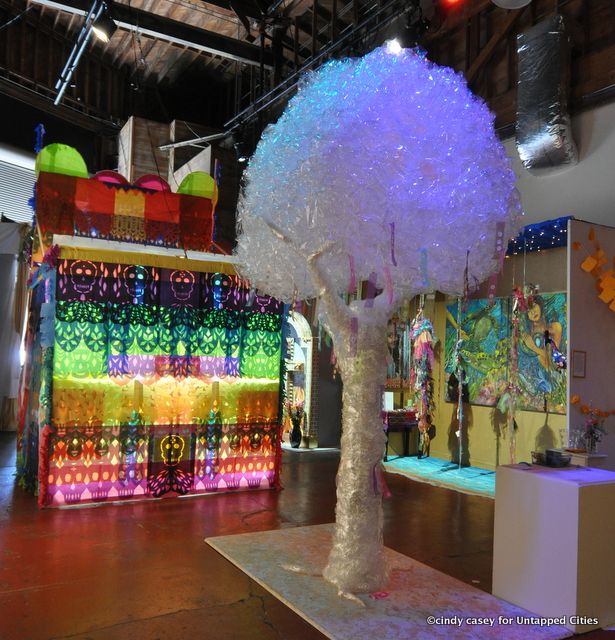 Tree for All by Edmundo de Marchena and Jeff Barhoum Lindo. “The tree represents possible contemporary family structures as well as the families of the future. It is an inclusive versus an exclusive model in which there are no constraints or traditions to follow.”
Tree for All by Edmundo de Marchena and Jeff Barhoum Lindo. “The tree represents possible contemporary family structures as well as the families of the future. It is an inclusive versus an exclusive model in which there are no constraints or traditions to follow.”
Down the hall was the Tree For All. While hardly the typical altar, it was a perfect personification of San Francisco’s diverse families. The tree asks that you tell about your family using stickers to represent family members. There were stickers for transgender parent, female parent, male parent, female child, male child and transgender child, reminding everyone that family now takes many different shapes.
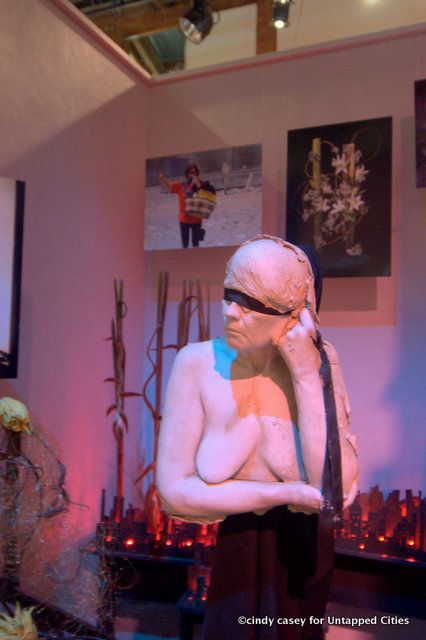 Keiko Kubo, Betty Segal, Irene LaChance and Nikolas Sikelianos use the Japanese art form Sogetsu Ikebana, a sculptural expression composed of flower and plant material, to honor artist, activist and September 11, 2001 attack survivor Janette MacKinlay
Keiko Kubo, Betty Segal, Irene LaChance and Nikolas Sikelianos use the Japanese art form Sogetsu Ikebana, a sculptural expression composed of flower and plant material, to honor artist, activist and September 11, 2001 attack survivor Janette MacKinlay
Several altars, while traditional in the fact that they honored the deceased they did so with a strong political statement. There was an altar for Janette MacKinlay, an Ikebana designer that died of brain cancer. She lived across from the World Trade Center and always believed she got her cancer after walking through the toxic cloud created that day.
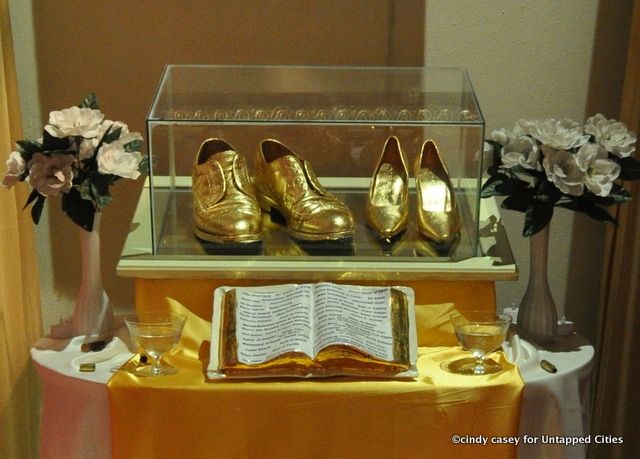
Another striking altar by Susan Matthews honored journalists killed in the Middle East. Using golden shoes as a reference to journalist Muntadar al-Zeidi, who threw his shoes at President Bush, the message was powerful and heart-wrenching.
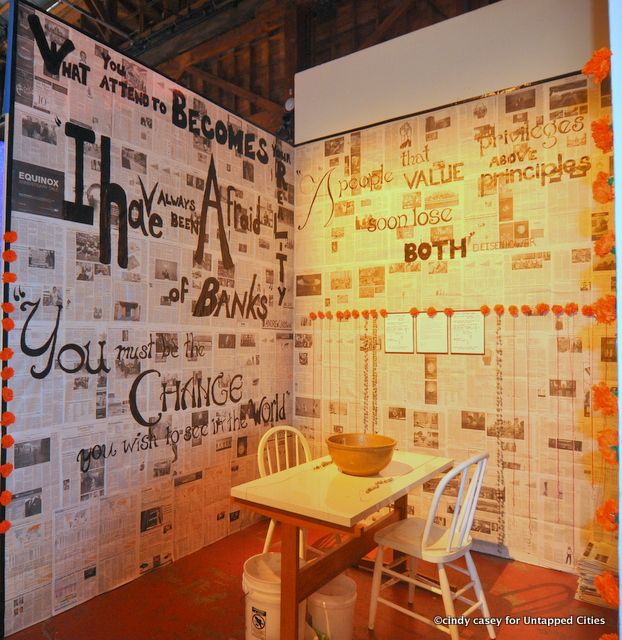
An altar by Kathy de Rosas and Ellen Vogel struck me very hard, and truly expressed many thoughts which I as a journalist carry with me.
These artists asked that participants refocus their energies to create the society they want to leave for their children. The purpose was to use the newspapers as a symbol of corporate bad news. The participant was asked to tear the newspapers up and transform them into prayer beads as an act of refocusing and asking, “What can you do to help your community thrive” .
Other artists showing their works in this years Day of the Dead exhibition include:DMT Mary by Helen Bayly, Live Vibrantly by Miriam Bergman, Ana Luisa Cardona and Nina Serrano, El Corrido del Cortito by Martinez, Novus Ordo Seclorum by Javier Rocobado and Where the Air is Clear by Susana Argon Rebaza.
The exhibit is an elegant combination of the traditional Meso-American culture that celebrates the past and its inhabitants in such a joyous way, and the art world. The messages presented prove that you cannot go forward without looking back, and we will grow in a better way as a community and as a civilization if we look back and celebrate and learn from those that went before.
Calling on the Spirits to Face the Future runs through November 10. The SOMArts Cultural Center is at 934 Brannan Street in San Francisco. Admission is free, gallery hours are Tuesday-Friday from 12-7pm, Saturday 11am-5pm and Sunday 11am-3pm.
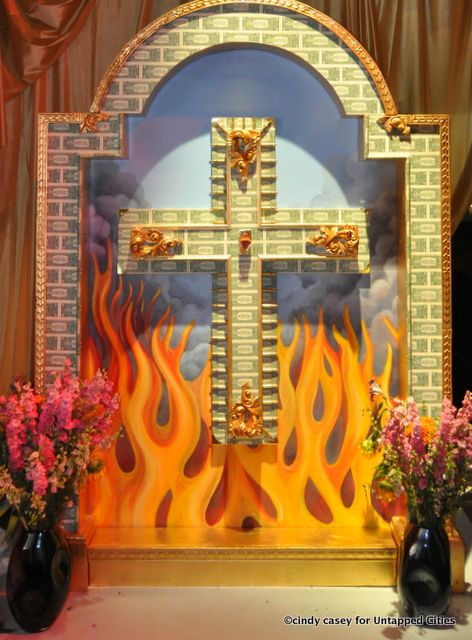
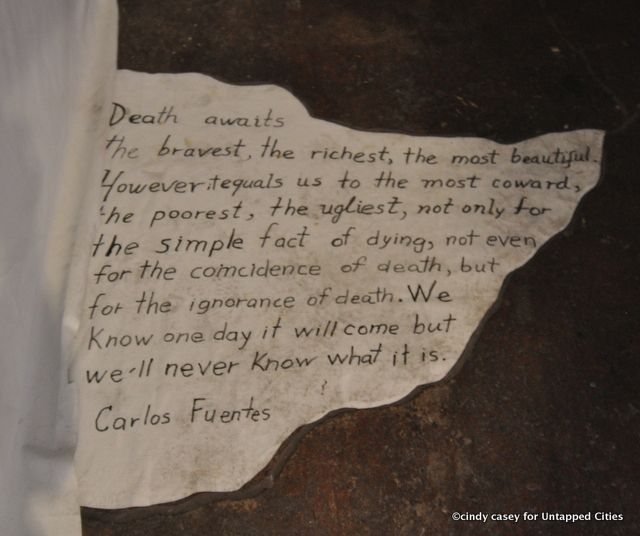
Read Reflections on San Francisco’s Day of the Dead Festival, Ann Lam‘s article on Untapped Cities on last year’s Day of the Dead Festival.
Get in touch with the author @PQPP3.
Subscribe to our newsletter